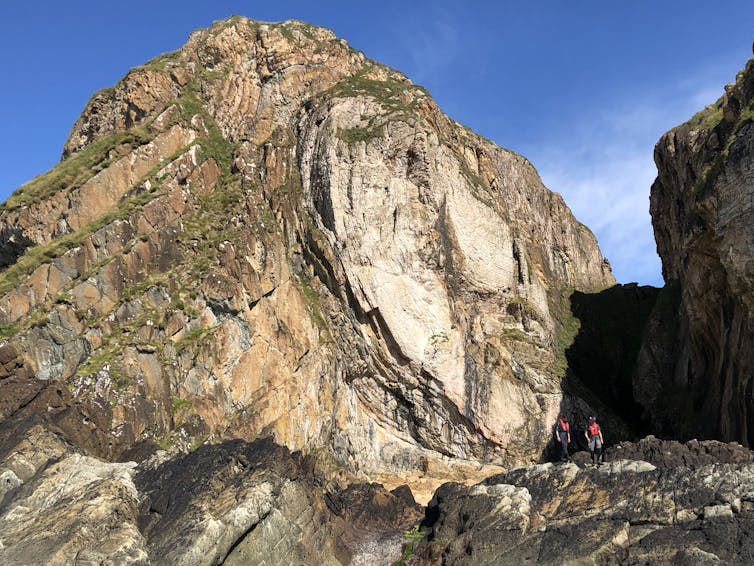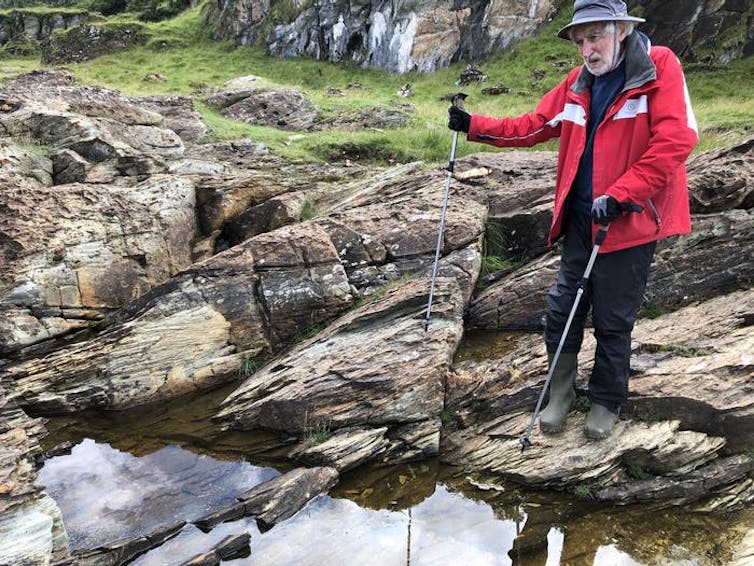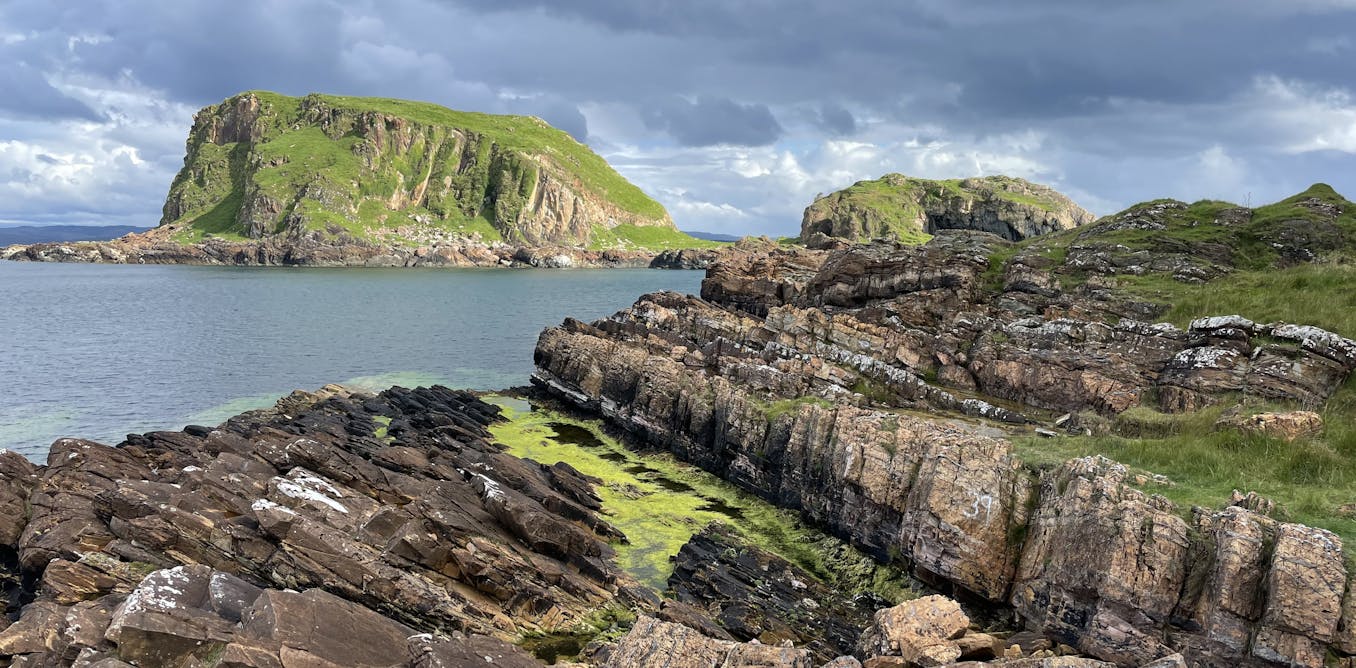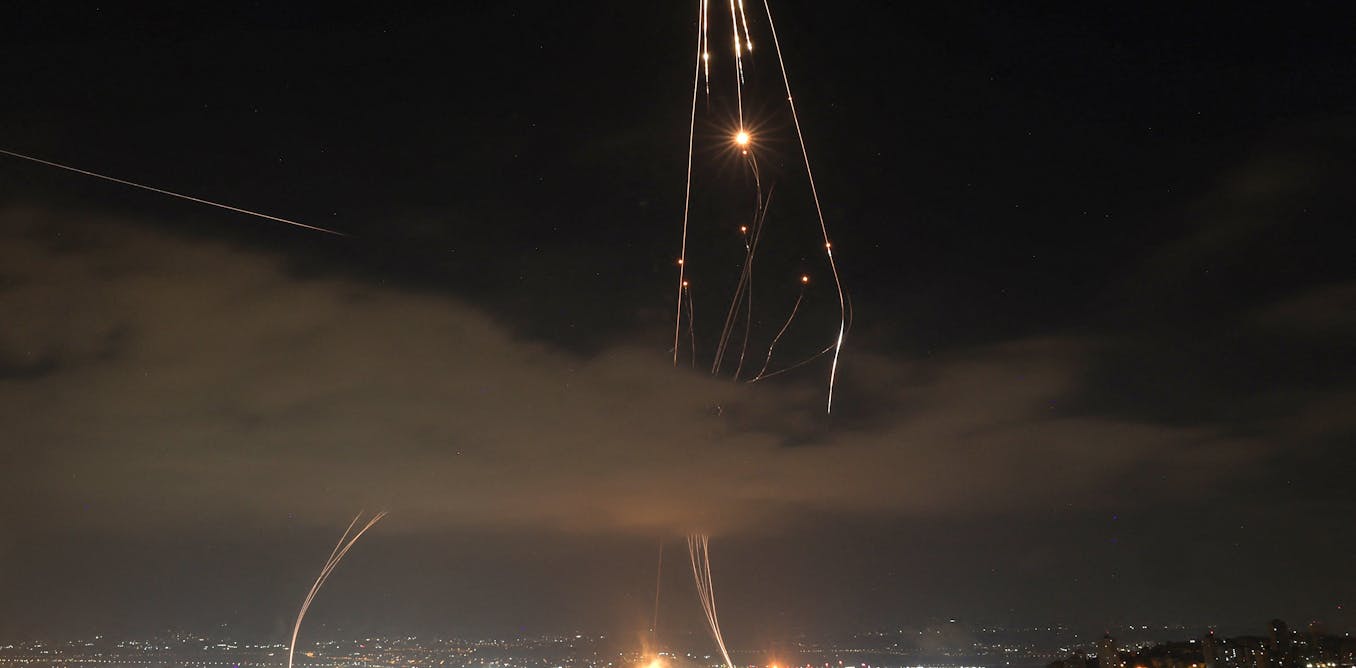More than 700 million years ago, the Earth was plunged into a state that geologists call “snowball Earth”, when our planet was entirely encased in ice. This happened when the polar ice caps expanded so far that they joined up around the equator.
Several lines of evidence show that the snowball Earth happened, but we have previously lacked rocks showing the landscape entering this big freeze. We may now have found this on tiny islands known as the Garvellachs, off the west coast of Scotland.
Sedimentary rocks are in layers that can record major events on Earth. For example, there’s a clear boundary 66 million years ago where rocks contain unusually high concentrations of the element iridium, which is often found in meteorites. This boundary marks the asteroid impact at Chicxulub in Mexico that wiped out most dinosaurs (sparing only birds).
This is an example of a global boundary stratotype section and point (GSSP): a representative point, which can be anywhere in the world, of rocks that mark the onset of a key episode in geological history. At these reference points, a “golden spike” is driven into the rocks to mark the boundary (although in practice the spike may just be a plaque).
Our new research shows that the rocks in the Garvallachs are an excellent candidate for a GSSP marking the onset of the Cryogenian period, about 717 million years ago. This period, which broadly coincides with the snowball Earth, is actually split into two global ice ages: the Sturtian glaciation (or freeze) and the Marinoan glaciation. Our GSSP would act as a reference point for the Sturtian glaciation.
Once the home of monks, the islands are now uninhabited apart from scientists who visit every summer to study their rocky shorelines. These include Anthony (Tony) Spencer who has been leading geological expeditions there for decades. Tony published a key work in 1971 showing that the rocks preserve evidence of an ancient glaciation. However, opinions varied over which ice age in Earth history they were connected with.
NASA
Beginning in 2021, and with Tony’s help, we began to analyse these rocks, as well as their underlying platform, which is made of minerals known as carbonates. Intriguingly, the carbonate layers beneath the surface rocks that record the glaciation seem to transition seamlessly into the glacial layers, suggesting that there is no missing time gap between the two rock units.
In terms of climate, this can be interpreted as warm seas, full of bacterial life, gradually transitioning into a frigid climate, before huge ice sheets scraped over the once tropical shoals.
Elsewhere on Earth, this pivotal transition into the Cryogenian period appears to have been removed by the erosive power of glaciation, resulting in a gap in the record. The Garvellachs are therefore potentially unique, as long as the Cryogenian age can be proved.

Graham Shields, Author provided (no reuse)
Our research team collected samples of sandstone from the 1.1km-thick Port Askaig formation as well as from the older, 70m-thick carbonate platform beneath.
We analysed tiny, extremely durable minerals in the rock called “zircons”. These can be precisely dated as they contain the radioactive element uranium, which changes into (decays) lead at a steady and known rate. The zircons, together with other geochemical evidence, indicate that the rocks were deposited between 720 and 662 million years ago.
So the Port Askaig formation was likely laid down during the roughly 60 million-year-long Sturtian glaciation.
The Earth is thought to have been covered in ice quite swiftly, over thousands of years, because of something called the “albedo effect” – with more ice, more sunlight is reflected back into space, and vice versa.

Graham Shields, Author provided (no reuse)
Complex life
The new age constraints may provide the evidence needed for the site to be declared as a GSSP for the start of the Cryogenian period. There are only 12 other period GSSPs around the world, as they commemorate such exceptional geological events. A Cryogenian GSSP in Scotland would mark the moment when thick ice sheets first reached what were then tropical latitudes.
By comparison, even at the most extreme point of the last ice age, the ice sheets only ever covered 8% of the globe, and then for only a fraction of the time represented by the Sturtian ice age.
The Cryogenian glaciations also represent a critical moment in the history of life. Molecular and fossil evidence suggests that the Cryogenian period witnessed the development of the first complex, multicellular life. For billions of years prior to this period, single-celled organisms dominated. After the Cryogenian period, animal and algal based ecosystems began to emerge.
One theory is that the way that the uneven ice cover isolated ecosystems from each other created ideal laboratories for biological experimentation. Whatever the cause, the sudden retreat of the ice would have been catastrophic, following tens of millions of years of steady adaptation. From the life that survived this came the ancestors of all animals, including ourselves.
This new study, as well as the ongoing research by Tony Spencer and his team, will pave the way toward a new understanding of this enigmatic time. It could allow us to finally find out what caused the snowball Earth and what this can tell us about the climate system.




